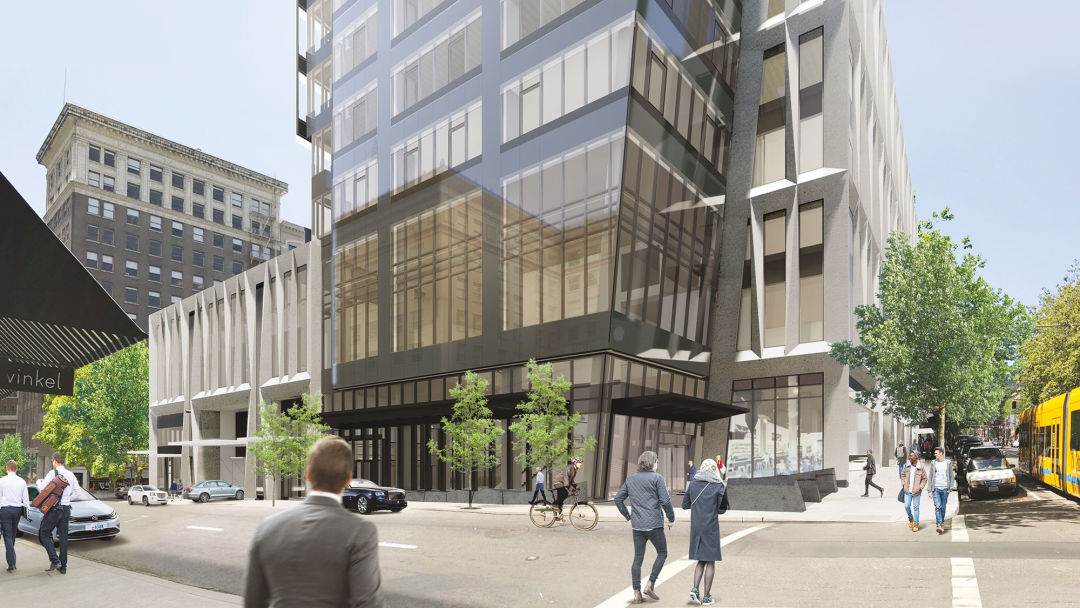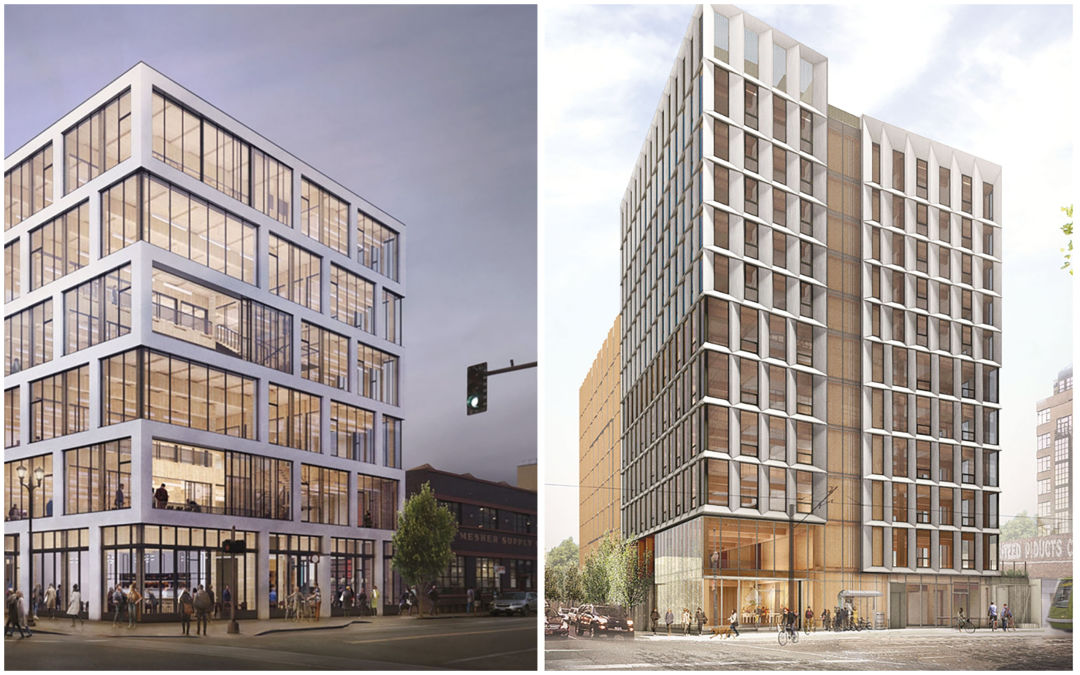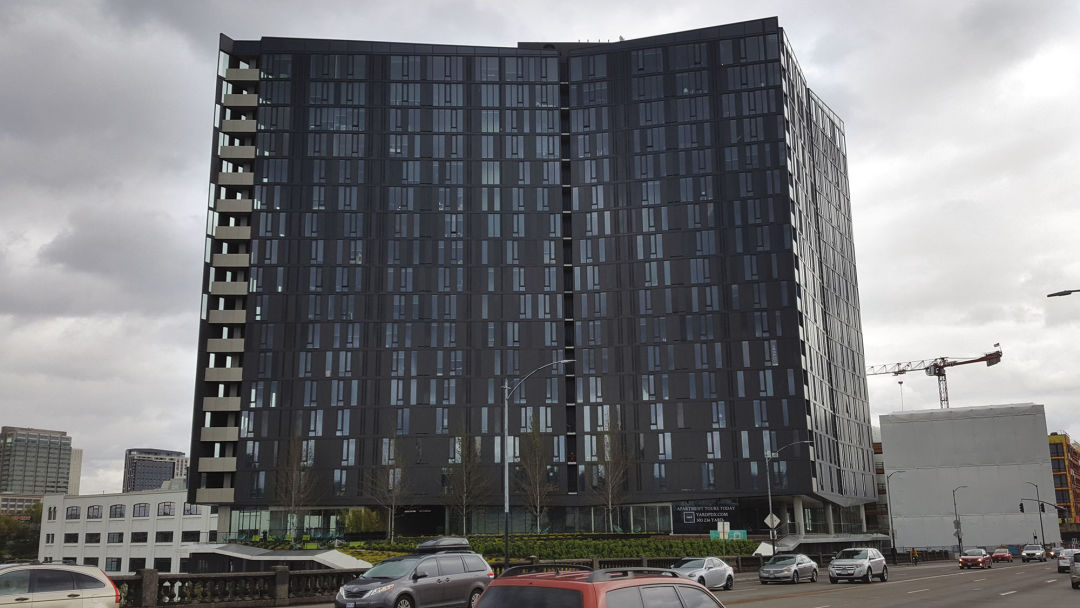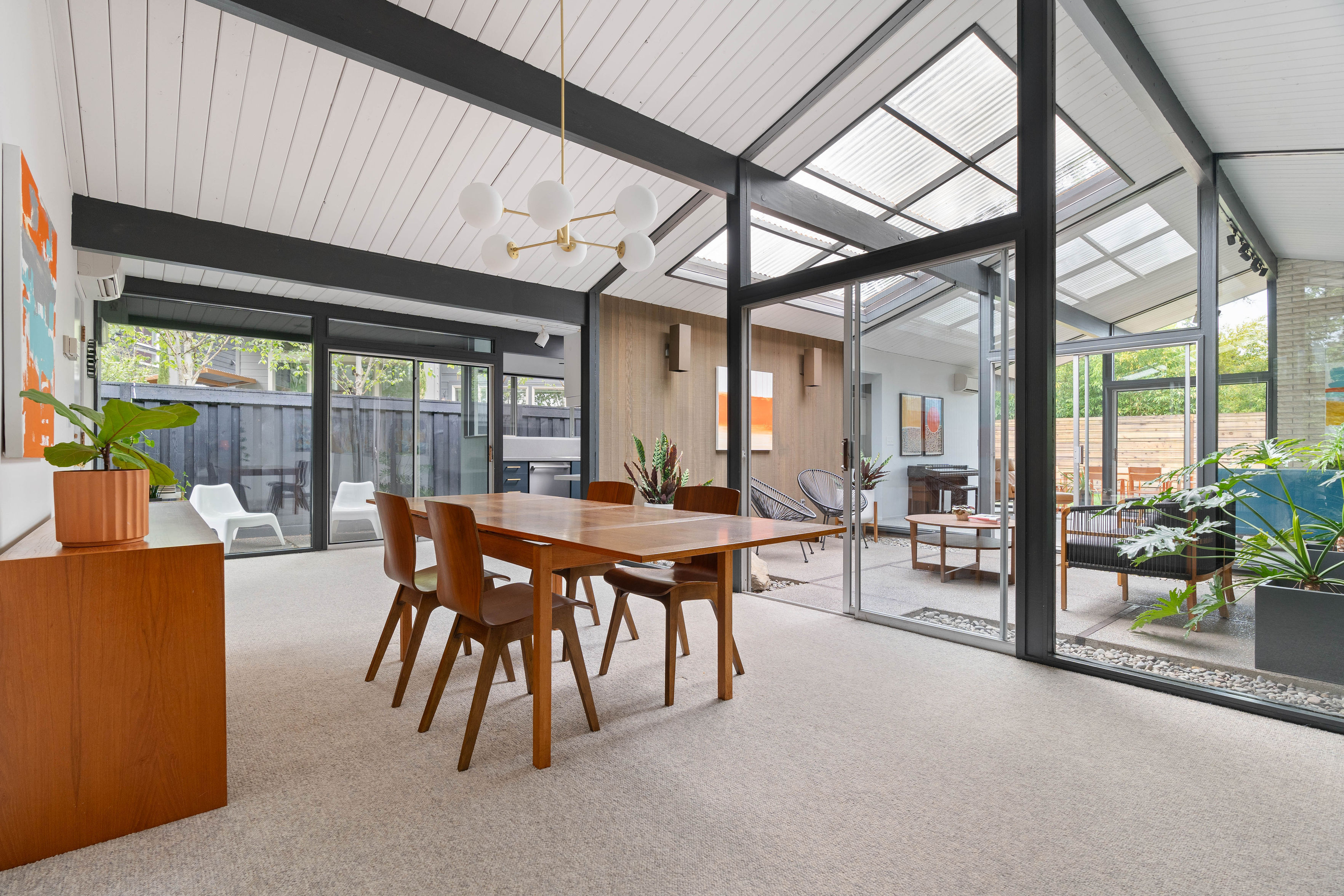
How an Elite Group Shapes Portland’s Building Boom, Behind the Scenes
This fall, cranes are at work transforming a parking lot called Block 216 into a 35-story tower. (Yes, we’re talking SW 10th and Alder, formerly downtown’s most epic food cart pod. Take your moment. Say your words.) That tower will house a five-star hotel, condominiums, offices, and a consolatory food hall. And at the northwest corner, where 10th hits SW Washington Street, a pie-slice wedge in the ground-level mass will create a small plaza. Architect Kyle Andersen of the firm GBD calls it an “eddy”: a grace note where future pedestrians can pause and take in the scene.
The plaza wasn’t in the design’s first versions. It—and many aspects of Block 216—evolved through a city process called Design Review. GBD submitted draft designs to professional bureaucrats, then ultimately to seven volunteer commissioners appointed by the mayor. The city came back with notes. Repeat, repeat, and voilà: a Block 216 in which many details, “micro to macro” as Andersen puts it, were workshopped with the public interest in mind.
“Given the size and presence of this building, we took a calculated approach,” Andersen says. “We engaged the Design Commission early and often.”

A rendering of the new Ritz-Carlton hotel under construction at SW 10th and Alder
Image: Courtesy GBD Architects
Design Review—for our purposes, let’s go capital D, capital R—is one of those processes most citizens never think about. But it shapes the city at an almost genetic level, and consumes many very bright people. “It’s the most difficult thing I’ve done,” says Julie Livingston, the Design Commission’s current chair. “It’s also very rewarding.”
This is one of several realms where Portlanders fight it out about new development—but it’s the one concerned with the city’s look and feel. Design Review, on its own, can’t really kill a project. But the professional staff and volunteer commissioners can apply the brakes whenever they see design problems that fall within their jurisdiction. “We always like to get to yes,” says Tim Heron, a city staffer who supports the commission’s operations. “But we don’t always get to yes at the first commission hearing.”
And as we build bigger and denser, Design Review is one way Portland defends its vision of itself. “Sometimes,” says architect David Keltner, a former design commissioner, “this can be the only thing between the city and some really bad stuff.”
What’s it all about? Times like this, we need bullet points.
• Design Review happens only for certain parts of town.
“Design overlays,” defined by city council, generally apply to areas primed for growth. The central city, including bits like the Pearl and Goose Hollow. The Central Eastside. Lower Albina. Outliers like Gateway.
• Only some projects in those areas get full Design Review. Rule of thumb: smaller projects tend to be reviewed by staff only. Larger projects tend to go to staff and the commission. The same criteria apply, which brings us to:
• Design Review uses city design guidelines, which fill a thick binder. Not as thick as the zoning code, though—important distinction! Zoning determines what you can build, and where. Portlanders tend to shake fists at new buildings’ height, or mass, or lack of parking. But all that’s zoning. Not Design Review. (Through a process called DOZA, aptly named, the zoning guidelines are currently being revised; city council will wade into that one later this year.)
• The guidelines enshrine three broad priorities: context (how projects fit and change their surroundings), “the public realm” (pedestrian and urban-life experience), and quality (mostly building materials).
All, obviously, judgment-call territory. “It’s really hard to create a subjective regulatory process that makes everyone happy,” notes architect Dave Otte.
On a sun-blasted July afternoon, Portland’s Design Commission convenes. The AC’s out; the meeting-room sound system hisses and pops for unknown reasons. Livingston introduces veteran architect Chandra Robinson as the newest commissioner. Robinson says she’s excited.
“Thank you for being willing,” Livingston says.

District Office by Hacker architects (left and Framework by Lever (right) are both hailed as DR successes.
First up: an affordable housing complex slated for SE Powell and 30th, near Hopworks Urban Brewing, designed by Holst Architects. (That’s Dave Otte’s firm, though other architects are representing the project at this meeting.) Commissioner Zari Santner, former head of the city parks bureau, quizzes Holst’s Rachel Brand.
“It’s a precedent-setting building for the neighborhood,” Santner says. “What was your architectural philosophy?” Brand replies that Holst aims to balance future residents’ needs with public amenities, plus the chance to stake something “dynamic” along Powell. Renderings of the five-story, 180-unit project flash on the projector screens. Bird’s-eye diagrams show a building that coils around a courtyard like a backward “C,” intriguingly angled on its steep lot. The Holst team talks about “carving” the intersecting wings to create courtyards and entryways.
The exchange feels collaborative, which is the ideal. Design Review is, however, not always this chill. “It shouldn’t be a studio critique session,” Otte says. “It’s about interpreting guidelines.” Interpretation can become a battleground.
In July, a group called Pearl Neighbors for Integrity in Design blasted a goliath tower proposed for NW Flanders and 12th—250 feet high—for its “lack of human scale.” Last year, a dispute over a proposed apartment complex on SE Ankeny—net-zero energy systems, angular façade, “a monstrosity” according to one neighbor—led to accusations that Design Review was stalling solutions to the housing crisis. Notoriously, in 2016 glazing changes to the oft-criticized Yard at the Burnside Bridge’s east end “slipped through the cracks” after review, the resulting reduction in the number of windows amplifying the dark, matte façade’s Vader factor.

The Yard on East Burnside
Design Review is where aesthetics intersect with politics, and vice versa. In an era when the pace and pressure of development bucks against Portland’s intimate street grid and small-is-beautiful lifestyle preferences, this is a challenging place to be.
On the other hand, there are successes. Livingston and city staff point with pride at the Pearl District Residence Inn (the yellow one). The hotel was going to center on a drive-up drop-off; Design Review turned that into the graceful pedestrian courtyard. In that elusive but critical “public realm,” our city takes shape, moment to moment.
“They said this would take some of my first and third Thursdays,” says Livingston, who assumed the commission chair in 2017. “So not true! The reward is that I can look at buildings and see that they’re better than they would have been.”
Former commissioner Keltner puts it more bluntly. “When I first joined, I was horrified,” he says of plans submitted to Design Review. “Incoherent jumbles. Bottom-of-the-barrel materials. People complain about what gets built—and it is a challenging time for cities. But [you] don’t see what doesn’t get built.”




